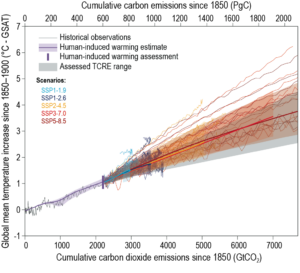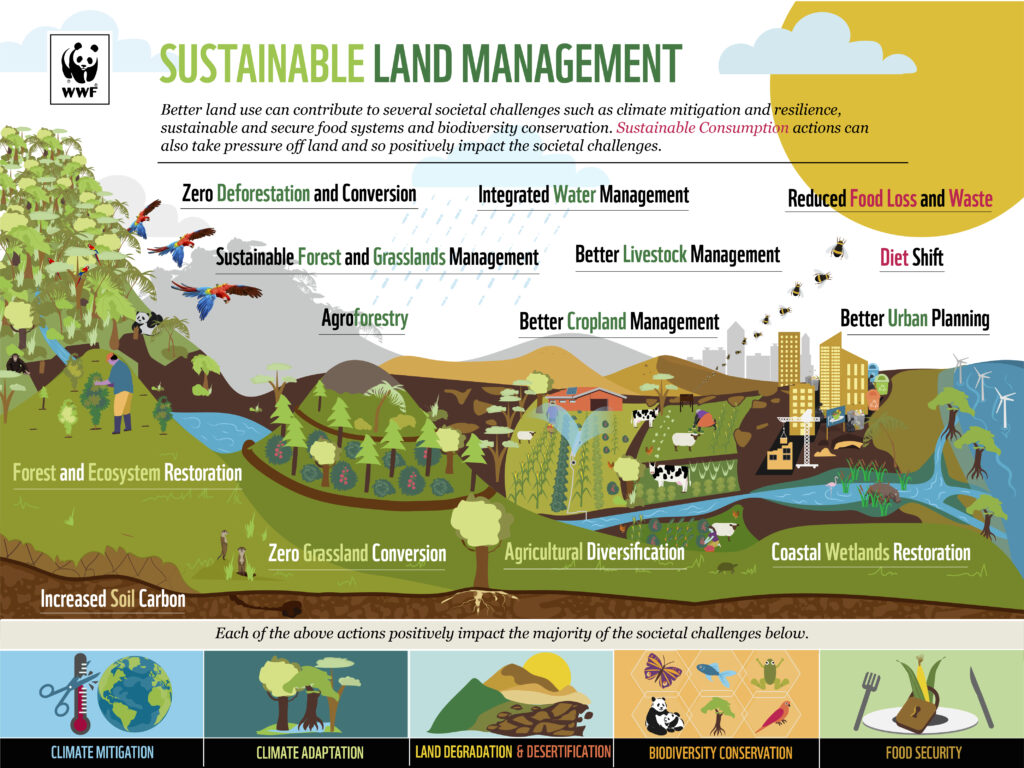
Sixth report IPCC (2021)
The increase in the concentration of greenhouse gases (GHG), mainly carbon dioxide (CO2), methane and nitrous oxide that has been registered in the atmosphere in recent decades comes mainly from human activity (for example, burning of fossil fuels, methane and nitrous oxide emissions in industry, livestock, agriculture, changes in land use, etc.). These GHG have caused an increase in the average temperature of the atmosphere, by absorbing and emitting thrm within the infrared range, which has negative consequences at a global scale (for example, changes in the distribution of species, modification in the regime of precipitation, increase in the intensity and frequency of extreme atmospheric phenomena, etc). This has produced that since the end of the 20th century (for example, the creation of the IPCC, the Rio Conference, the United Nations Framework Convention on Climate Change, the Kyoto Protocol and subsequent COPs) countries have agreed through different international commitments to limit the increase in temperature in the atmosphere to +2 oC (preferably to +1.5 oC) by the end of this century.
As a consequence, there have been an endless number of international agreements and commitments, where some main objectives have been achieved, such as the need to reduce drastically GHG emissions into the atmosphere, the need to implement actions to adapt to climate change or the importance of maintaining natural capital as a climate change mitigation element, among many others. These international agreements have subsequently materialized at the European and Spanish level in different regulations such as the
European Climate Law, the
European Green Pact, the
Fit for 55 initiative, and in Spain, the
National Climate Change law or the
Integrated National Plan for Energy and Climate. Among the ambitious objectives of these regulations are a drastic reduction in net GHG emissions in the European Union (55% compared to the emission values of 1990) or climate neutrality (zero net GHG emissions) in the year 2050. in Europe, which represents a huge technological, economic and social challenge. To address the climate neutrality, a series of actions have been proposed, ranging from a drastic reduction in GHG emissions, the decarbonization of the economy, transport or energy; that is, achieving net zero emissions through a reduction in the burning of fossil fuels, the increase in the use of renewable energy sources, the efficient use of energy or the use of biofuels, among others. In addition, and with the objective of achieving net zero emissions both from the European Union through the Green Pact, and later in the different national regulations, emphasis is placed on the need to protect, conserve and improve natural capital and the improvement in the trading of carbon emission rights, including other sectors not considered until now, and better regulation in others that already exist.
The protection of natural capital within the context of climate change is derived from two aspects. On the one hand, natural capital ensures that ecosystems release more and better ecosystem functions and services, and that therefore citizens benefit economically, socioculturally or healthy from the existence of natural ecosystems in a good state of conservation. On the other hand, at the base of the ecosystems are the primary producers, mainly photosynthetic organisms that capture CO2 from the atmosphere to produce organic matter through the photosynthetic process. This organic matter can follow different paths in the ecosystem, such as being consumed by herbivorous and thus feeding the trophic web of the ecosystem, being incorporated into the biomass of the photosynthetic organisms themselves, giving rise to growth, being exported to other adjacent ecosystems or being deposited and/or buried in the ground. In this way, all this primary production that remains as biomass of photosynthetic organisms, is deposited or remains buried in the soil in the long term (hundreds or thousands of years), has in its composition carbon previously removed from the atmosphere (in the form of CO2), and therefore contributes to lowering the levels of this gas in the atmosphere and helps to mitigate climate change.

Example of nature-based solutions to mitigate climate change



